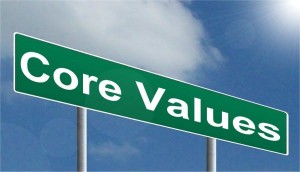
You know when you enter a workplace and you can just tell that the culture is established and accepted? The employees all seem to get along, there is a consistent quality of service and yet everyone seems concerned about your experience as a customer. How about the opposite, you walk in and you can feel tension and the negative energy like toxicity in the air, unless you order from the same person every time you end up with a different product, and the last thing anyone seems concerned about is you. The fact is, every workplace has a culture, it takes strong leadership to establish and maintain that culture according to the organizational goals. In this article, we explore the following processes:
- Analyzing pre-existing culture
- Imagining and Defining the ideal culture
- Setting rules to enforce culture
- Leading by example
 The first thing the leader of any workplace needs to do is truly understand how its employees relate to the organization, the customer and one another. This requires a “no holes barred” approach. Set your ego aside, because you will likely uncover some philosophies that have been adopted that surprise you. While efficiency matters, does haste not make waste? Are parts being handled with care, is there appreciation for the tools, do the machines get maintained properly? To get answers to these questions, start with the following actions:
The first thing the leader of any workplace needs to do is truly understand how its employees relate to the organization, the customer and one another. This requires a “no holes barred” approach. Set your ego aside, because you will likely uncover some philosophies that have been adopted that surprise you. While efficiency matters, does haste not make waste? Are parts being handled with care, is there appreciation for the tools, do the machines get maintained properly? To get answers to these questions, start with the following actions:
- Chronologically follow jobs from beginning to finish and track deadlines, progress, design specifications, customer feedback and profitability
- Monitor behaviors that can impact safety, efficiency and quality
- Listen to conversations between coworkers and identify opportunities for relationship development
The next step is to imagine the ideal culture and put it in writing. Being an entrepreneur is hard work. So ask yourself, “is my work ethic trickling down into all the layers of my shop?” Does every employee base decisions on the same factors that guide your decisions? Chances are: probably not. In the ideal situation, how would employees be motivated? Perhaps by what makes your customers happy? Or maybe by the same variables that can reduce costs and boost profits? The answers to these questions sometimes can contradict, so the key is to establish a set of core values that define your approach to conducting business. Examples of these may be: integrity, consistency, community, honesty, reliability, affordability, responsiveness, etc. Make a list of your shop’s attributes that you’re proud of and identify values that align with those. Then make a list of those you’re not so proud of and identify which values are lacking. Once you have found a handful of these values, it is time to start setting rules.
A rules-based culture doesn’t need to be rigid, but it needs to be enforced. If quality is the metric, allowing something to go out the door that slightly missed Q/A is not acceptable. You hold it back, correct it, and then send. A culture that values transparency and communication may require over-communicating and sharing more detail than you normally would. Perhaps open-book management is something you want to consider to bring everyone in on the game plan. There is nothing black and white about establishing the right culture for your shop, but in order for your strategy to come to fruition you need to have a backbone and a willingness to explain, remind and reinforce your shop’s value system.
 A lot of times our words don’t match what we do. Not to say we are all hypocrites, but leading by example is the most critical factor in establishing your shop culture. If you expect your employees to show respect to your customers, but they hear you griping about the latest request, that contradicts. If you expect your employees to be honest and open with you, but you keep information from them, that contradicts. If you expect your employees to keep the shop organized and well maintained, but your desk is a disaster and you can’t seem to find what you’re looking for, that contradicts. Shop culture starts with you. As the leader you have to hold yourself to the highest degree of accountability. Everyone around you should be able to observe the way you work, the way you talk, the way you handle conflict and see your values in action. It’s time to hold yourself to the highest standards you could ever expect of your team.
A lot of times our words don’t match what we do. Not to say we are all hypocrites, but leading by example is the most critical factor in establishing your shop culture. If you expect your employees to show respect to your customers, but they hear you griping about the latest request, that contradicts. If you expect your employees to be honest and open with you, but you keep information from them, that contradicts. If you expect your employees to keep the shop organized and well maintained, but your desk is a disaster and you can’t seem to find what you’re looking for, that contradicts. Shop culture starts with you. As the leader you have to hold yourself to the highest degree of accountability. Everyone around you should be able to observe the way you work, the way you talk, the way you handle conflict and see your values in action. It’s time to hold yourself to the highest standards you could ever expect of your team.
Establishing culture is not an overnight task. It happens slowly, but when you are ready to redefine your culture you need to steer the ship and as contradictions arise, you need to be consistent and steadfast in your values. As you do this you build a foundation for future development and growth.
The next part of this series we will discuss the one thing that never changes: the fact that change is inevitable. Change management is a critical component to any leadership strategy. As technology and business trends evolve we need to be able to adapt. Leadership in the midst of change can make or break your shop. Stay tuned…


